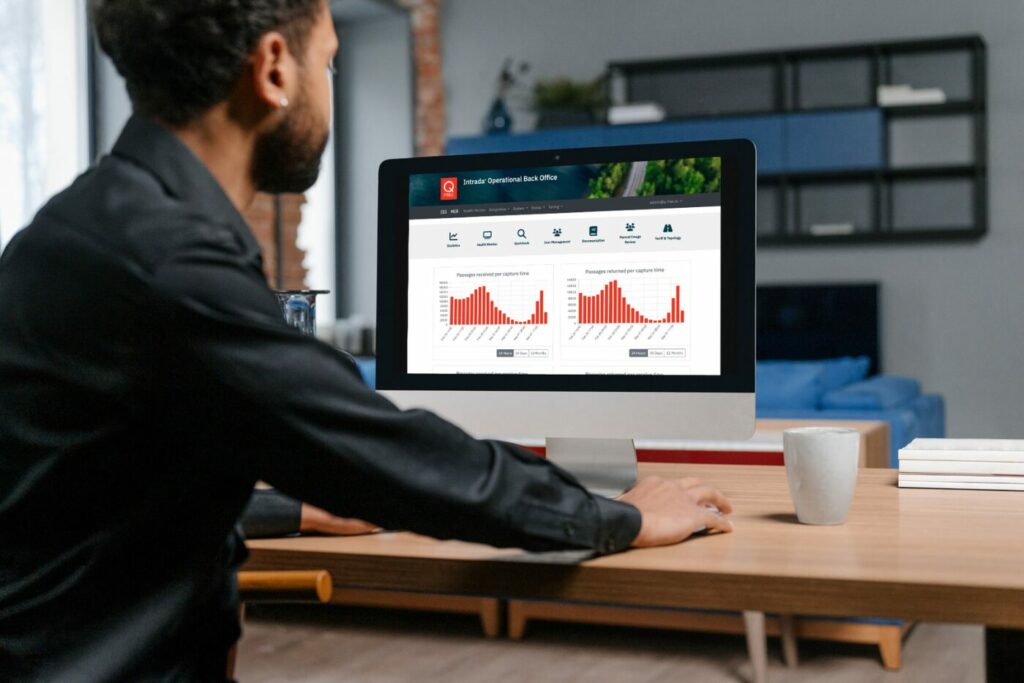

News
Q-Free’s Intrada technology: a conversation with Marco Sinnema
As urban areas grow and traffic becomes more complex, managing tolls and traffic flow efficiently is more critical than ever. Q-Free is at the forefront of this challenge, transforming the industry with its cutting-edge Intrada technology.
In this interview, Dr. Marco Sinnema, Vice President and Head of Image Review Solutions, shares insights into how Intrada is reshaping the industry and what lies ahead for this groundbreaking technology.
Intrada Technology’s Role in Diverse Traffic Markets
Q: Marco, how does Intrada technology fit into different traffic markets?
A: Intrada technology is essential across various traffic segments, including tolling, speed enforcement, parking, and access control. It’s designed for high accuracy and reliability, automatically recognizing license plates and analyzing vehicle data. This makes toll transactions faster and more accurate, reducing the need for manual checks and keeping traffic flowing smoothly. Intrada supports over 200 countries, ensuring global compatibility and effectiveness.
For example, Intrada Insight enhances video tolling accuracy while cutting costs. It’s compatible with any camera or back-office system, making it highly adaptable. Intrada ALPR stands out for its reliable license plate recognition, crucial for parking and speed enforcement. Additionally, the Intrada Synergy Server (ISS) is a high-performance image processor that seamlessly integrates with tolling, parking, and enforcement systems.
Beyond traditional applications, Intrada also has unique capabilities, such as detecting cellular usage while driving, facilitating quick vehicle data lookups in service stations, and streamlining operations in car wash facilities.
Driving Innovation with AI and Machine Learning
Q: How does rapid innovation in tech influence Intrada’s development?
A: Our market-oriented approach keeps us at the forefront of technological advancements. AI plays a crucial role in how Intrada identifies vehicles, using machine learning to analyze vehicle images and recognize license plates with high accuracy. Our systems learn continuously from real-world data, adapting to varying conditions like low light and high speeds.
A notable feature is Intrada’s fingerprinting technology, which creates a unique “fingerprint” for each vehicle based on attributes like license plate details and vehicle shape. This capability is especially valuable in busy toll systems, allowing for accurate vehicle matching across different camera views and reducing the need for manual checks.
Our R&D team collaborates closely with academic institutions, sharing research and insights. This partnership ensures that we stay aligned with the latest developments in image processing technology.

The Future of Tolling and Traffic Management with Intrada
Q: What do you see next for Intrada and traffic management technology?
A: We are advancing in several key areas. Recently, we introduced real-time analytics, enabling toll operators to quickly address potential issues and minimize errors like mischarges. Looking ahead, AI and machine learning will become even more sophisticated, allowing us to predict and address challenges before they impact operations. We’re also exploring edge computing to make roadside systems faster and more responsive.
On the operational side, our Intrada Operational Back Office offers a complete end-to-end toll management platform. It provides insights into traffic flow and toll usage, enabling operators to control vehicle identification, transaction processing, and more. This marks a significant step toward standardization and scalability, allowing for more efficient tolling operations.
While our focus on technological advancement is unwavering, our true priority remains on delivering solutions that benefit our customers and the communities they impact. Our goal is to be a seamless partner in solving complex challenges, ensuring that every innovation makes a tangible difference for our clients and the millions of travelers on the road each day.